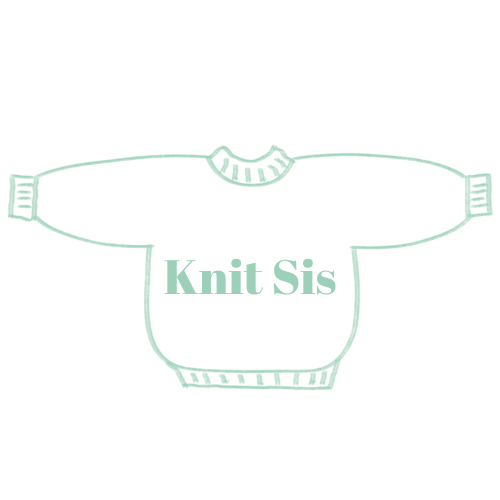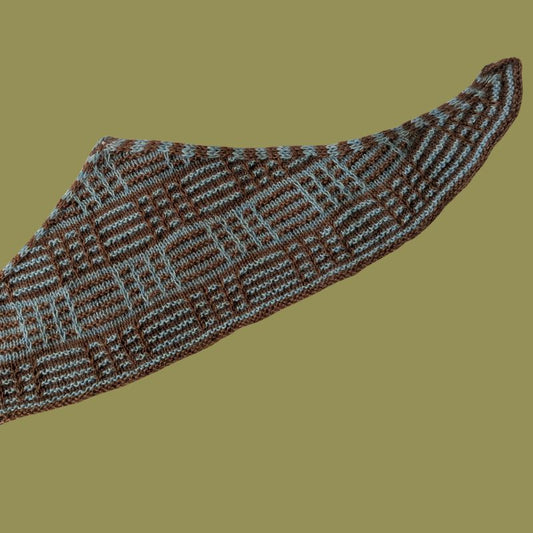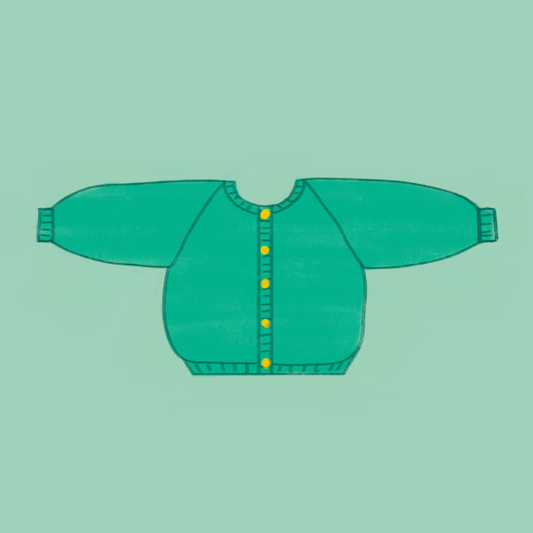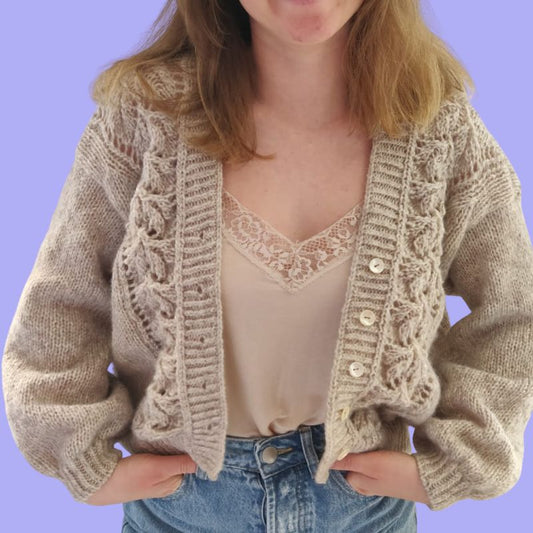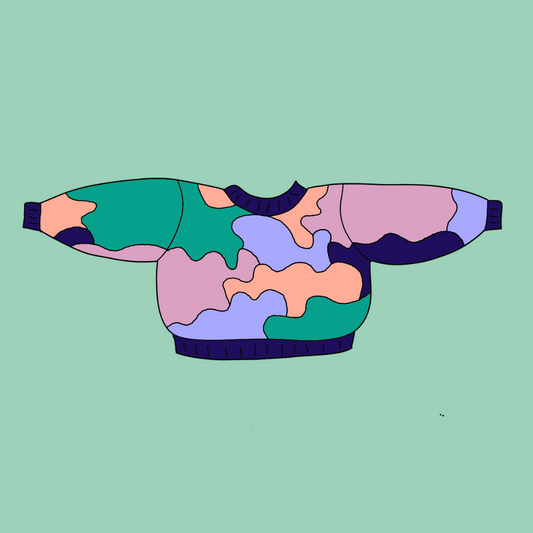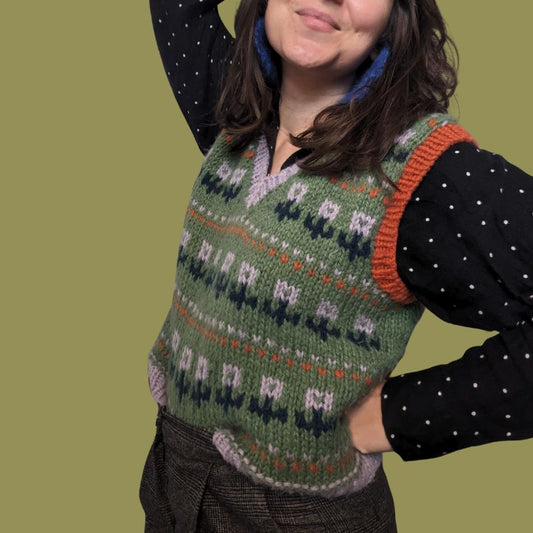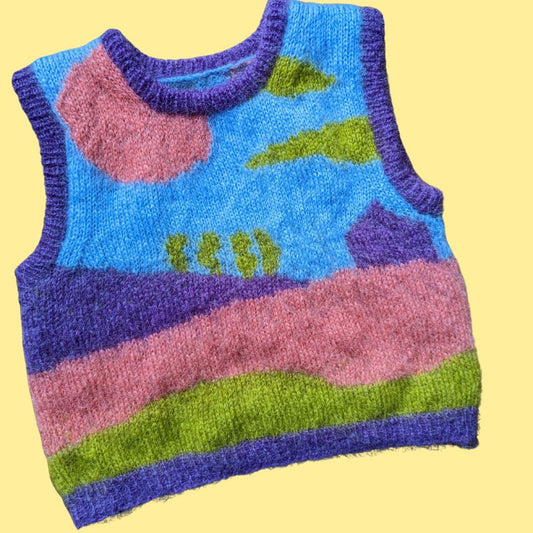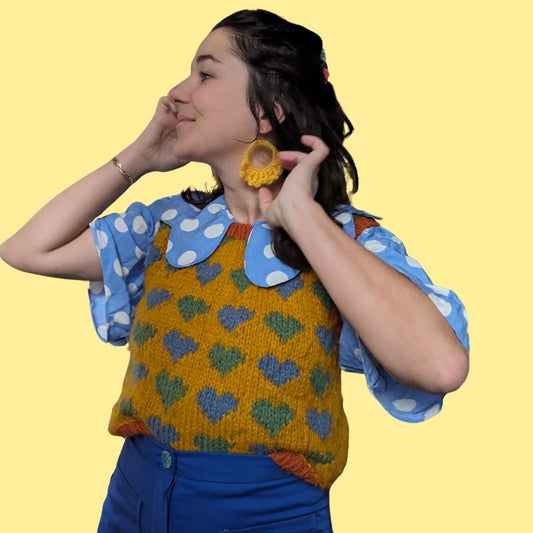🧶 Relief knitting techniques: bobbles, bubbles and textures that make all the difference!
Knit SisShare
✨ Add volume to your projects with raised stitches
Have you always knitted in jersey and want to add some pep to your projects?
Raised knitting techniques are your best friend for adding character to your pieces. Puffs, bubbles, popcorn stitch, or basketweave stitch... so many textures can transform a simple knit into a unique work.
In this article, we explain step by step how to create these textured effects, when and why to use them, and we give you some exclusive Knit-Sis models to put them into practice. 🎉
🧩 What is raised knitting?
Relief knitting combines different techniques for creating volume and 3D effects in a piece.
These effects are achieved using specific stitches such as bobbles , bubbles , cables , or even basket stitch , which modify the surface of the knit to give it character and style.
🧶 The 4 main families of raised stitches
🔹 1. Noppes: small textured beads
Bobbles are small growths created by knitting several stitches into one, then working them over a few rows before casting them off together.
They bring a vintage, romantic or even graphic charm depending on their arrangement.
💡 Tip : Bobbles are ideal for creating floral patterns or adding texture to a plain sweater.
🧵 Recommended model :
👉 Knit-Sis' Twist and Shout Cardigan incorporates beautiful bobbles into a sophisticated cable pattern. Perfect for intermediate knitters looking for a style challenge.
🔸 2. Bubbles (or bubble stitch): soft relief
Less compact than bobbles, bubbles give a puffy and soft effect, perfect for children's knits or fun pieces. They are often created on a jersey or garter stitch background.
🎨 Knit-Sis Inspiration :
To date we do not have a model using this technique, but follow our adventures to be alerted when a pattern is released.
🔸 3. Basket stitch: a stunning faux weave
This two-tone stitch alternates slipped and knit stitches to create a braided or checkerboard effect . It's a visually striking texture that evokes a hand-crafted weave.
Recommended model :
💥 The Elmer Vest is the perfect embodiment: original, graphic, and perfect for playing with your contrasting wools.
🔸 4. Textured twists
Well-known to knitters, cables create a relief effect by crossing stitches over each other. Combined with bobbles, they create a majestic and structured effect.
🧶 To test with :
The Twist and Shout Vest , again, subtly combines twists and bobbles for a highly textured result.
📺 Video tutorial: How to knit a bobby pin easily?
Frequently asked question : How do I make a knitted bobby pin?
Quick answer :
To knit a bobby pin, you knit 5 times in the same stitch (knit, purl, knit, purl, knit), turn your work and knit these stitches for 2 or 3 rows, then cast them off together.
📌 When to use raised stitches in your projects?
-
To enhance a plain yarn by adding texture.
-
To create geometric or floral patterns without changing color.
-
To add volume to simple pieces.
-
To create areas of visual interest on a sweater or cardigan.
💎 Pro tip : Combine textures and bright colors (like in The Twist and Shout Vest or The Vintage Fall ) for truly unique pieces.
🧡 Knit-Sis patterns with irresistible textures
|
Boss |
Level |
Texture used |
Style |
|
Twist and Shout Vest |
Intermediate |
Noppes + Twists |
Refined & structured |
|
Elmer Vest |
Intermediate |
Two-tone basket stitch |
Graphic & original |
|
Mondrian sweater |
Intermediate |
Change colors + texture |
Color block |
|
Splashie Sweater |
Advance |
Intarsia + color effects |
Playful & fun |
👀 Want to try these techniques for real?
➡️ Explore our textured patterns
🧵 In summary: Make your knits vibrate with the right reliefs
-
The bobbles and bubbles add volume and fantasy.
-
The basket stitch creates a very graphic woven effect.
-
The twists reinforce the structure and nobility of a work.
-
Knit-Sis offers modern, fun and accessible patterns to experiment with all these techniques!
👉 Browse our collection of original patterns to try out raised stitches now.
